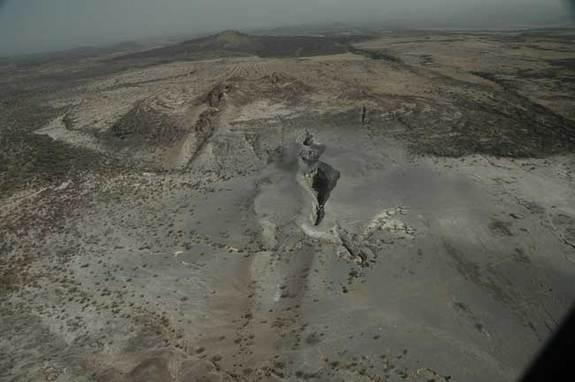
Rifting of Ethiopia Unearths Clues to Continents

The mystery of how continents break up could be solved with clues from the rifting earth of Ethiopia, researchers find.
Since the 1960s, scientists have known that over the course of millions of years, Earth's continents break up as they are slowly pulled apart by the planet's tectonic forces. As part of the same mechanism, new oceanic crust forms at volcanic seams along the ocean bottom, slowly spreading out and creating an ever wider ocean.
However, the specifics of how such earth-shattering developments take place have often eluded scientists, as the details at the borders of continental and oceanic crust are often buried beneath thick layers of volcanic and sedimentary rocks, and the tectonic activity that marked the breakup has ceased.
An ideal place to analyze continental breakup step by step is Ethiopia, where the ongoing rifting of Arabia from Africa began from about 26 million to 29 million years ago and continues to this day. Researchers there can see continental rifting toward the south and seafloor spreading farther northward all out in the open.
Scientists analyzed the timing and spatial distribution of magmatic and tectonic activity in Ethiopia over the last 30 million years, with a focus on the most recent 5 million years.
The researchers found that during the early stages of continental breakup, the injection of molten rock into the crust and below Ethiopia allowed tectonic plates to move apart without much thinning of the crust, as this magma helps add to it. This prolonged span of activity is now being followed by stretching and thinning of the tectonic plate, allowing massive lava eruptions at the surface and sinking of the land below sea level.
The findings of the work could not only help scientists understand what is going on in this area, but could also shed light on the rifts of continents in the past.
Sign up for the Live Science daily newsletter now
Get the world’s most fascinating discoveries delivered straight to your inbox.
"The really exciting thing about the work is not just that it helps to explain why earthquakes and volcanoes are presently active in northern Ethiopia, but that it provides a tantalizing hint at the processes that may have acted millions of years ago to split other continents apart," researcher Ian Bastow, a seismologist at the University of Bristol in England, told OurAmazingPlanet.
The scientists detailed their findings online March 13 in the journal Nature Geoscience.











